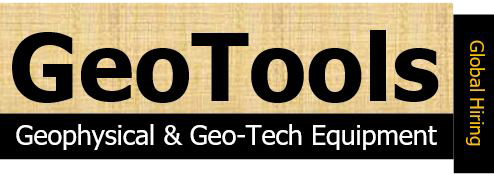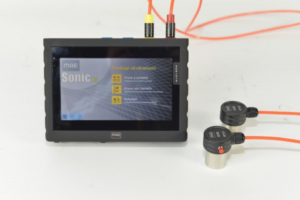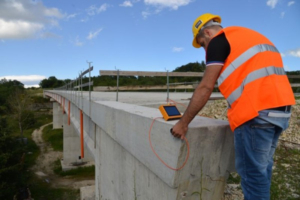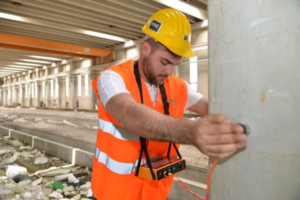Description
SONIC15 is a device for non Destructive Tests with ultrasonic pulse velocity and sonic tests on masonry through instrumented hammer. In spite of compact dimension of the unit, there is a wide monitor of 7’’ with integrated touch screen which allows to use it on site in immediate and effective way. Waves acquisition and visualization parameters could be easily changed in simple and immediate way through touch screen, in order to allow on site first checking of recorded data. SONIC15 can be used for surveys both on cement and concrete elements both on masonry structures. According to different kind of performed tests, just connect to instrument necessary accessories as different kind of ultrasonic probes or impulsive trigger hammer for impact tests. SONIC15 instrument together with the new Controls digital sclerometer can be used for Sonreb tests.
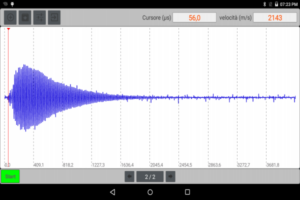
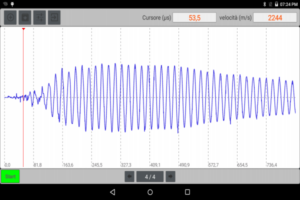
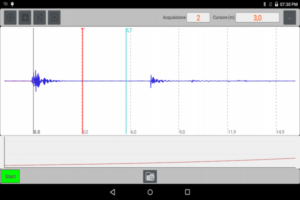
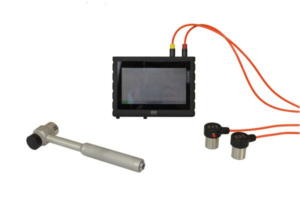
Methodologies
ULTRASONIC PULSE VELOCITY
The method is based on the propagation speed of longitudinal ultra-sonic waves inside a reinforced concrete structure. The propagation speeds depends on the characteristics of the material such as elasticity, density, presence of gaps, micro-holes, etc… From the determination of the following parameters: reflection, refraction, transit time (T.O.F.) and mitigation of the vibration energy, it is possible to obtain information on:
-
Homogeneity of the mix
-
Elasto-mechanical characteristics
-
Entity, geometry and location of particular faults or internal defects, variations in time of the quality parameters of the concrete
Ultra-sonic tests through which it is possible to evaluate the transit speed of the pulses (with known thickness and time) are particularly important.
The primary goal of the Ultra-sound survey is to record the time of fly (TOF, Time of Fly) and the following calculation of the speed. In order to calculate the propagation speed of longitudinal waves (P waves), the arrival of the first wave-train must be found out with accuracy. In order to perform this operation correctly, the instrument must be equipped with oscilloscope that allows to visualize the transit wave on the device display.
The ultra-sound tests can be carried out with:
-
Direct method
When the transmitting and receiving probes are positioned on the opposite sides of the element to test.
-
Semi-direct method
When the E/R probes are positioned on adjacent surfaces, usually orthogonal, of the element to test
-
Indirect method
When E/R probes are positioned in the same side of the structural element to test.
SONIC TEST
The principle of the sonic tests on masonry is the same as principle of Ultrasonic Pulse Velocity on concrete.
The only difference is the method to produce the longitudinal elastic wave used for the measurement: a hammer is used instead of an ultra-sonic pulse.
The frequencies thus produced (a few hundreds of Hz), lower than those of the ultra-sounds (a few tens of KHz) are able to also cross scarcely compact masonry walls, such as brick-faced or brick walls, thus allowing to evaluate the conservation state, through the speed and/or mitigation values of the wave produced.
This type of test can also be applied on concrete structures, which sizes do not allow to use ultra-sounds, because these can no longer be measured at a few metres from the source. The sonic tests give less accurate values compared to the tests with ultra-sounds, but they can be performed also on scarcely compact materials and/or at a distance of a few metres.
Technical Specifications
General
Power supply: lithium battery 13Ah
Power consumption: 1,1A @ 5V
Operating temperature: 0 / +60 °C
Dimensions: 220 x 180 x 60mm
Display: LCD capacitive 7″ TFT touch screen
CPU: CortexA8 @ 1 GHz, RAM 500 MB, Flash 1GB memory
Graphic functions: Automatic zoom on cursor or on a temporal set up window, time cursor reading
Regulations: ASTM-C597- 09, UNI EN 12504-4
Weight: 800 g
Acquisition
Resolution: 12 bit
Signal range: ±2.5 V
Samples per event: 2048
Amplification factors: x1, x2, x4, x5, x8, x10, x16, x32
Bandwidth: 200 Khz
Ultrasonic filter: central frequency 50 kHz
Differential error: <0.03%
Trigger : trigger button / hammer / automatic
Probes
Typology: Contact
Frequency: 23 / 55 / 70 kHz
Trigger: Integrated trigger button on TX probe
